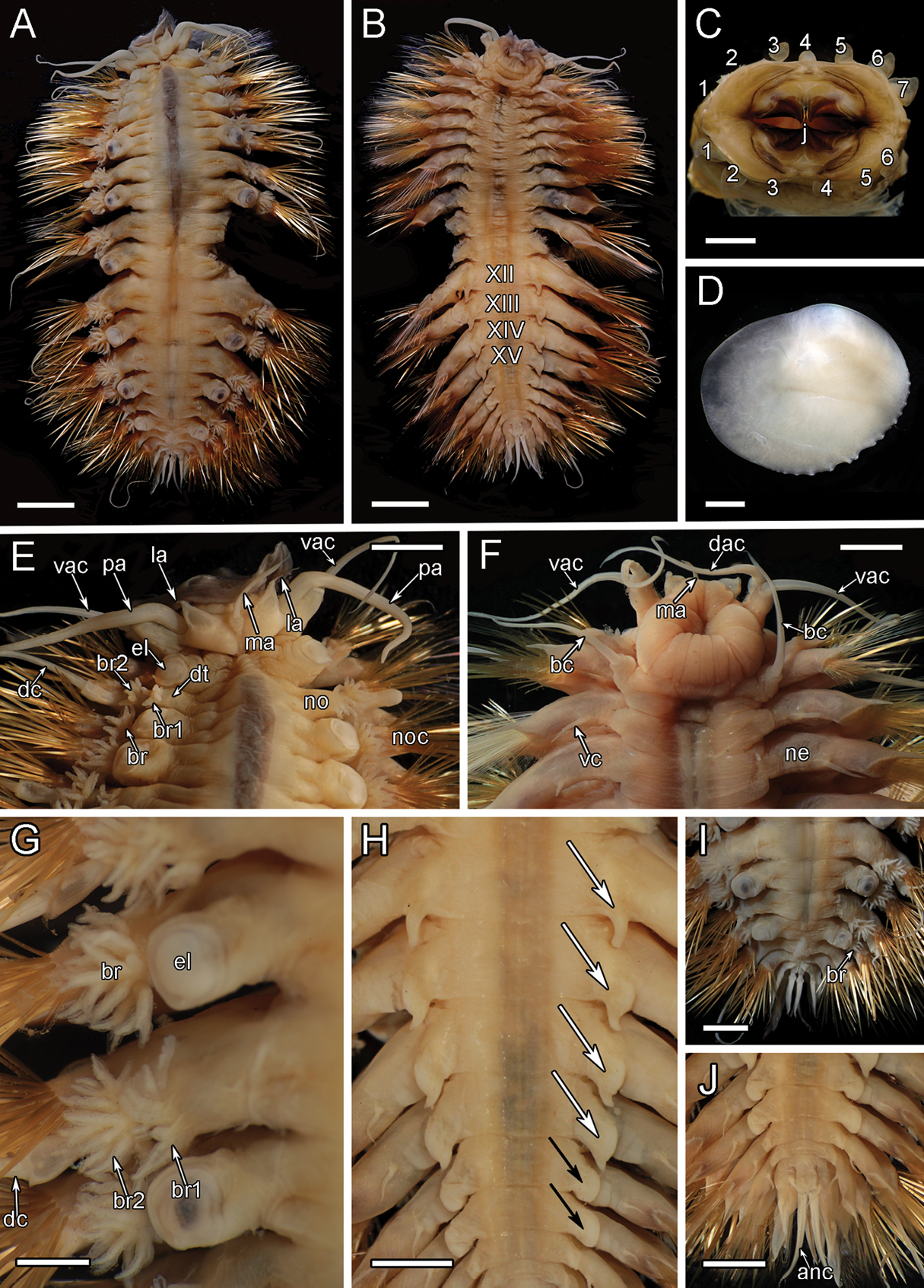
|
||
|
Macro photos and micrographs of P. goffrediae sp. nov. holotype SIO-BIC A5485 and paratype SIO-BIC A5464 A dorsal view, holotype B ventral view, holotype. Segments 12–15 are marked to indicate the presence of four pairs of papillae C frontal view of proboscis showing papillae and jaws, holotype. Numbers mark the papillae on the dorsal (seven papillae) and ventral (six papillae) surfaces D loose elytron, holotype E dorsal view of anterior, holotype F ventral view of anterior, paratype G left side branchiae on segments 12–15, holotype H ventral papillae on segments 12–15 (four pairs) indicated by white arrows, holotype. Ventral lamellae on segments 16–17 (two pairs) indicated by black arrows, holotype I dorsal view of posterior, holotype J ventral view of posterior, holotype. Abbreviations: XII, segment 12; XIII, segment 13; XIV, segment 14; XV, segment 15; j, jaws; ma, median antenna; la, lateral antenna; pa, palp; dac, dorsal anterior cirrus; vac, ventral anterior cirrus; el, elytrophore; br, single large group of branchiae on elytrigerous segment; noc, notochaetae; dc, dorsal cirrus; br1, branchiae small group 1 attached to dorsal tubercle on cirrigerous segment; br2, branchiae large group 2 attached near base of notopodium on cirrigerous segment; no, notopodium; vc, ventral cirrus; bc, buccal cirrus; ne, neuropodium; dt, dorsal tubercle; anc, anal cirrus. Scale bars: 4 mm (A, B); 2 mm (C–F, H–J); 1 mm (G). |